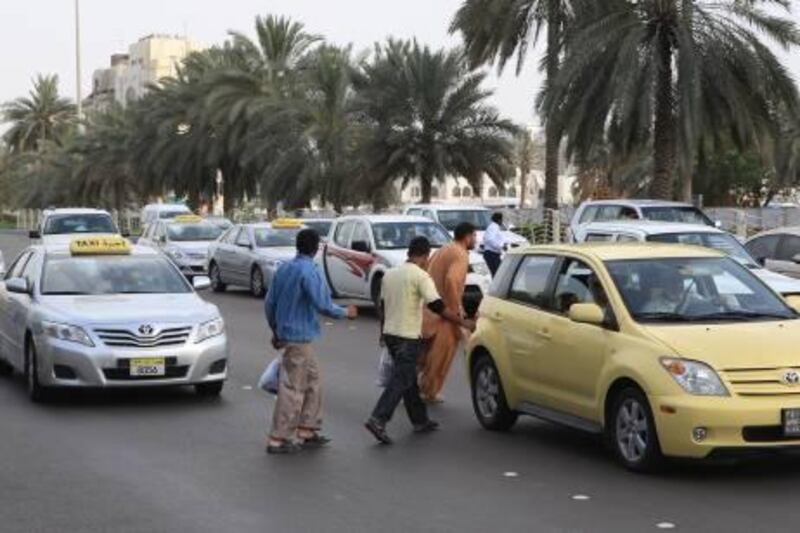ABU DHABI // Nine new pedestrian bridges have been approved across the emirate, with some to be open by July and all in use by September, according to a senior official of the Abu Dhabi traffic police.
Two bridges will be built in Abu Dhabi city, two in Musaffah, two along the Abu Dhabi-Al Ain road and three along the Abu Dhabi-Dubai motorway.
Three of the new bridges will be built over motorways in areas where there are academic institutions, including Al Shahama, where students are often seen dashing across the road to reach Al Abraaj Boys School.
______________
Also
• Three Emirati sisters killed by car
• Children's nanny died 10 months after crash
• For pedestrians, nowhere to run
______________
"The locations were chosen after a series of studies which identify the black spot areas," said Brig Hussein al Harethi, head of the Traffic and Patrols Directorate.
He added that the bridges, recently approved by the Executive Council, were to be built in collaboration with the Department of Transport and Abu Dhabi Municipality.
Ahmad Khalil, who commutes regularly between Dubai and Abu Dhabi, said he often saw people running across the E-11 motorway near Al Shahama. "It's absolutely ridiculous," he said. "I don't know how these people are not afraid when cars are driving at crazy speeds."
The traffic directorate aims to have the most urgently needed of the new bridges open by July, but did not say which ones it considers most important.
Statistics quoted during the Road Safety Middle East summit in January showed that in 2009, 30 per cent of road accidents in Abu Dhabi involved pedestrians, up from 25 per cent in 2007. A quarter of such accidents lead to serious injuries or deaths.
Statistics from the summit also said Abu Dhabi's annual death toll in traffic accidents exceeded seven per 100,000 of population.
On Monday a woman was killed crossing Defence Street at an undesignated crossing.
Despite the dangers, pedestrians still take chances, traffic police say, because of issues including the long times they must wait for a signal to change and the distances between pedestrian crossing places and individuals' destinations. Another danger is created by refugee islands being too narrow.
A recent Department of Transport study found that 60 per cent of pedestrians crossed at places other than designated crossings, because they were inconvenient.
Suzan Sallam, an Egyptian resident in Abu Dhabi, said Salam Street was particularly problematic for pedestrians.
"The pedestrian crossings there are at intersections and they are too far apart," said Ms Sallam, who does not own a car. "There need to be more crossings installed in that area."
Drivers who do not give way at pedestrian crossings are subject to a Dh500 fine and six black points on their record. Pedestrians caught jaywalking are subject to a Dh200 fine.
"It's not always the driver's fault," Mr Khalil said.
"Sometimes, it's a simple lack of judgement. If a pedestrian is running across a motorway, at night, in an undesignated area, what do you expect? Reducing the number of fatalities is both the responsibility of the drivers and the pedestrians."
During the Road Safety Middle East summit, an official of the Urban Planning Council said that a new urban environment manual would help make the city pedestrian-friendly, a main goal of the Abu Dhabi 2030 vision.
The manual tackled every detail, including the type of pedestrian crossing and the size of the refugee areas and pavements, Mr Khalil said.






